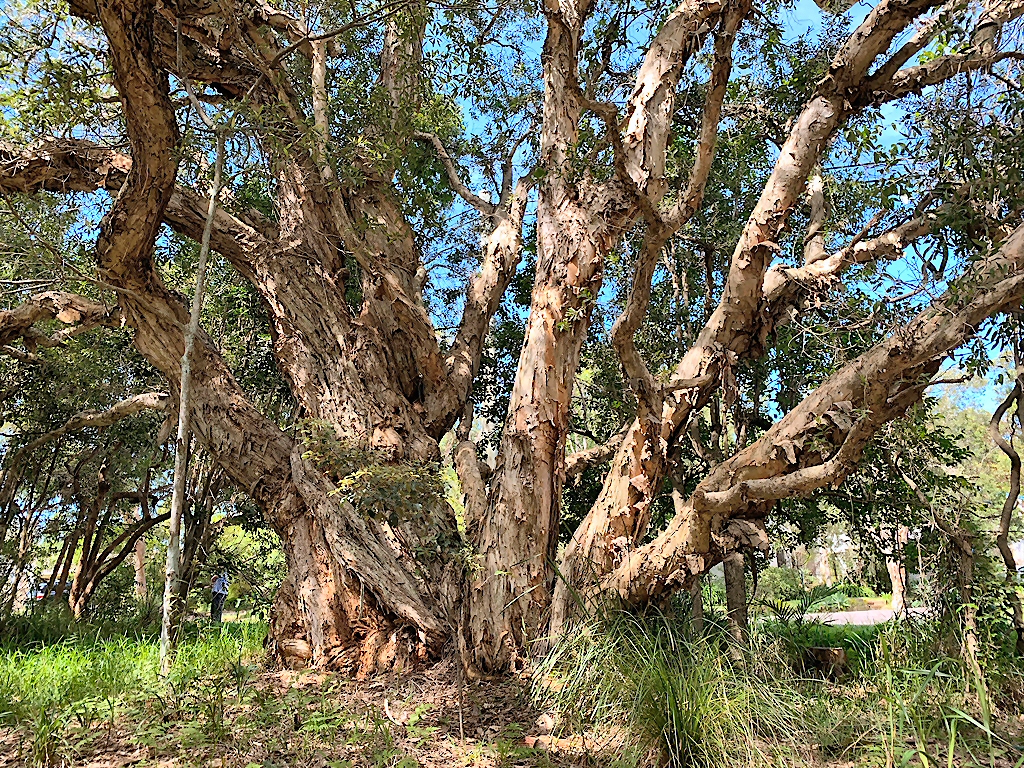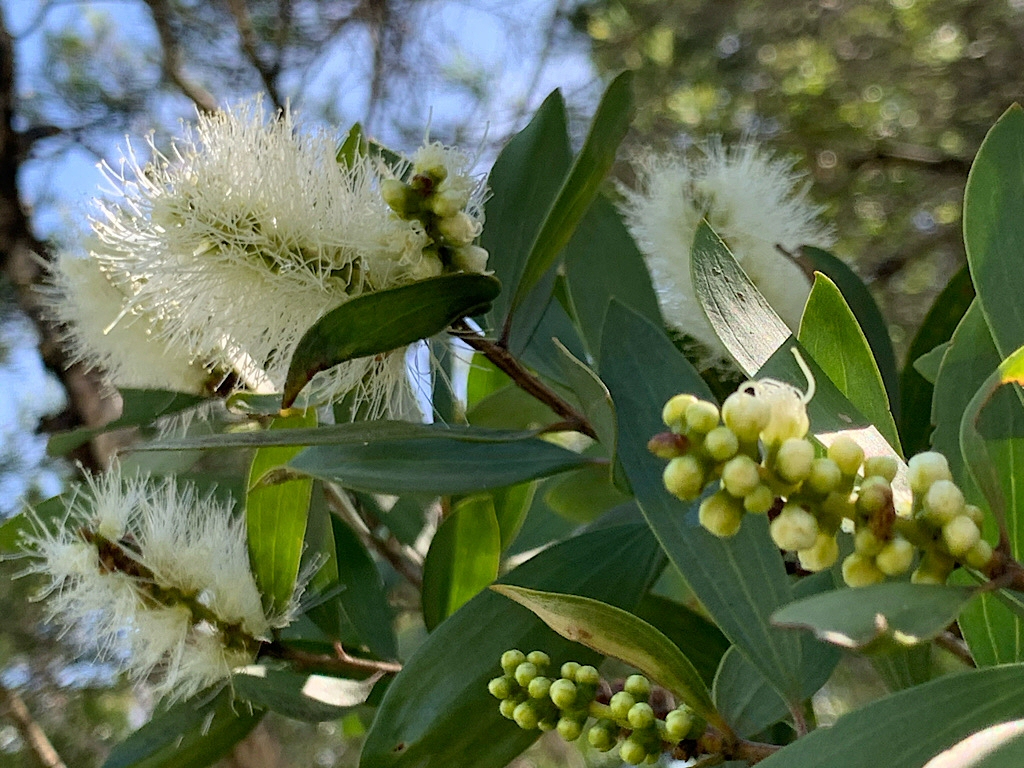-

Melaleuca quinquenervia - broad leaf paperbark
-

Melaleuca quinquenervia - broad leaf paperbark
-

Melaleuca quinquenervia - broad leaf paperbark
A medium sized to tall tree, growing from 8 to 25 metres tall and 5 to 10 metres wide, with lovely thick soft papery bark in cream to brown shades. The growth is spreading and makes a beautiful feature tree, and flowers with white bottlebrushes in late summer to autumn, attracting nectar eating wildlife. It withstands both very wet conditions and dryness, frost to -5, useful for windbreaks and as a street tree. Can be pruned to a single trunk or to a branching spreading tree. As it is a large plant, care needs to be taken as the root system could become a problem. The leaves can be used to make cineole-rich essential oil for various pharmaceutical uses, the bark was traditionally used for wrapping food for cooking, lining cradles, to stuff pillows and as emergency bandages. It naturally grows from Cape York Queensland to Sydney, also occurs in New Guinea and New Caledonia. It has been declared a noxious weed in 6 states of America where it has taken over some valuable ecosystems.
